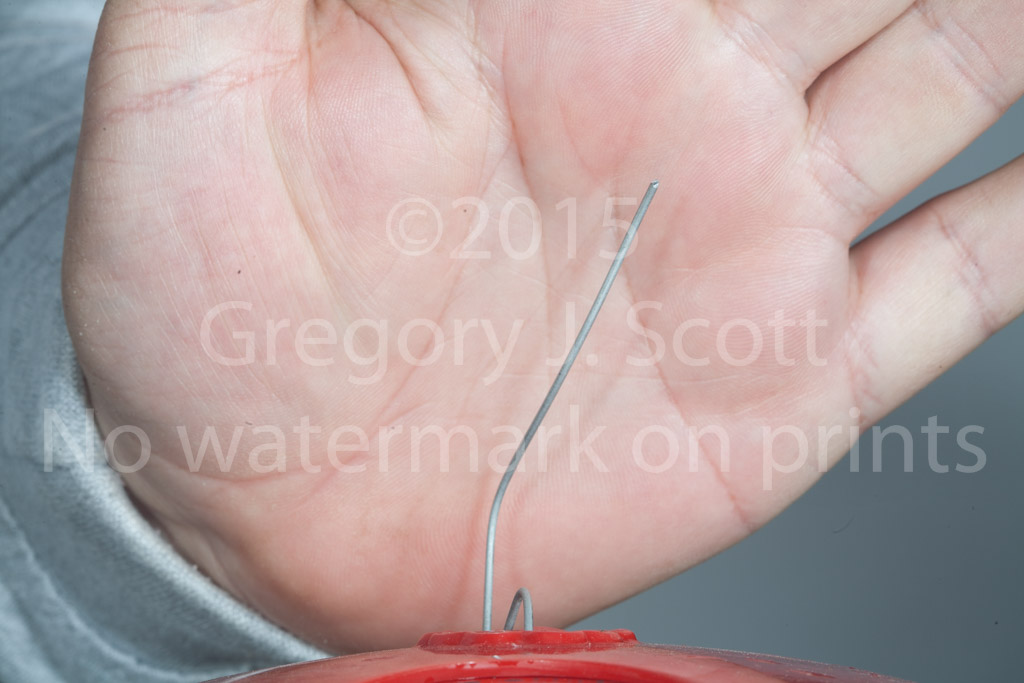One Hour of Unedited Hummingbird Photography: Technique and Methods
Click the large image once to see it larger, and click yet again to see it at FULL resolution! But don't forget to read the caption UNDER is page to get all the technical info.
Focusing Demo: I use a preset position for feeder, camera, background, and bird (on average) for focusing and exposure on the bird and exposure on the background.

Slightly overexposing my hand is fine, since my target species is darker than my hand. Using a 100mm f2.8 Canon Lens, and my powerful antique custom built Olsen Ultra High Speed 4 head flash, with an flash duration of 1/30000 second, this setup was in the shade for camera, bird and background, each positioned for exposure and framing. The white cardboard appears grey instead of white because it is farther from the flash than the bird. In this case, because of the shade, I was using preset manual focus, and this is what I focused on for this session. (which really lasted most of the day, including set up and tear down.
I am holding my hand where I am expect the hummingbirds to hover, which is a few inches behind the feeder, and above the feeder. The feeder is a saucer type feeder with perch cut off, and 2 of the three feeding ports sealed with masking tape or hot glue. These adaptations are so the bird will hover, not perch, and hover in the right spot, in between sips. The camera settings are full manual at 1/200 sec at f16, ISO 100, and the lens a EF100mm f/2.8 Macro USM Lens.